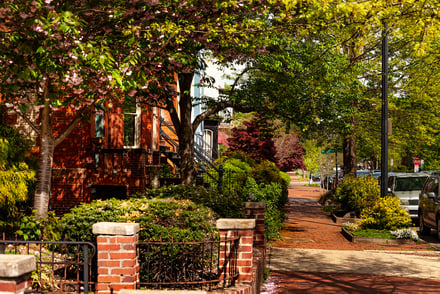 Turning your attic into livable space can add valuable square footage to your historic brick home. When you're renovating a historic property, though, it's vital to balance modern comfort and amenities with architectural preservation. From the right insulation to structural considerations and everything in between, here's what you need to know to ensure your attic renovation retains the character and value of your home.
Turning your attic into livable space can add valuable square footage to your historic brick home. When you're renovating a historic property, though, it's vital to balance modern comfort and amenities with architectural preservation. From the right insulation to structural considerations and everything in between, here's what you need to know to ensure your attic renovation retains the character and value of your home.
The Importance of Insulation for Home Attic Renovations
No two historic homes are exactly alike; they all come with unique stories. What most of them do share, though, is a lack of sufficient insulation. Inadequate insulation can make for drafty conditions in winter and downright stifling ones in summer. The right insulation is a key component of any renovation to keep your new space comfortable, reduce energy costs, and help stave off moisture-related damage. That said, not all types of insulation are suitable for all homes; choosing the right one for your house will go a long way towards avoiding issues like trapped moisture or damage to original materials.
- Loose-Fill Insulation: Cellulose or blown-in fiberglass is a great option for irregular spaces, and can be installed with minimal disruption.
- Rigid Foam Board: An excellent choice for attics where every square foot counts, rigid foam board provides a high insulation value while also being resistant to moisture.
- Spray Foam Insulation: While spray foam is quite effective at air sealing, it must be applied carefully to minimize the risk of moisture problems in historic structures.
Structural Considerations for an Attic Conversion
Historic attics were not always designed to be livable spaces, so structural integrity should be one of your first concerns.
Key Areas to Evaluate Before Renovating:
- Floor Load Capacity: Attic floors were often built to support storage, not daily living. Reinforcement may be necessary before adding furniture or heavy fixtures.
- Roof Ventilation: Proper ventilation helps prevent moisture buildup on the roof, which can lead to mold and deterioration of historic wood.
- Accessibility: If your attic doesn't have an existing access staircase, adding one that complies with building codes, while maintaining historic aesthetics, is essential.
Addressing these factors early in the renovation process will help prevent costly surprises down the road.
Preserving Historic Integrity During Renovations
Certain modifications may be subject to preservation guidelines if your home is located in a historic district. Maintaining original architectural details can help retain your home's value while respecting its history. There are a number of ways to ensure that you are preserving your home’s character.
- Retain Original Woodwork: Exposed beams or original flooring add charm and authenticity.
- Match Existing Materials: If you're replacing any trim, windows, or walls, use materials that blend seamlessly with the rest of the home.
- Follow Local Preservation Regulations: Washington, D.C.'s Historic Preservation Office provides guidelines for modifying historic properties.
Before making structural changes, check with local authorities to ensure your renovation is compliant with preservation standards.
Energy Efficiency Without Compromising History
Modernizing an attic doesn't mean sacrificing historic integrity. Thoughtful upgrades can improve energy efficiency while preserving the home's original character.
- Sealing Air Leaks: Gaps around pipes, wiring, and vents should be sealed to prevent drafts.
- Window Restoration: If your attic has existing windows, consider refurbishing rather than replacing them to maintain authenticity.
- Efficient HVAC Solutions: Ductless mini-split systems are often a good option for historic homes, as they provide heating and cooling without requiring invasive installation.
Consulting Professionals for Historic Attic Renovations
Renovating a historic home comes with unique challenges, so working with professionals experienced in historic preservation is highly recommended. Masonry experts, structural engineers, and preservation specialists can help ensure that any upgrades respect the original craftsmanship of your home.
If you're considering an attic renovation in your historic brick home, Renaissance Development can help ensure that your project stays true to the home's architectural heritage. From preserving original brickwork to making essential structural repairs, our expert team specializes in tuckpointing, using historically appropriate and traditional methods and materials to maintain the beauty and integrity of Washington, D.C.'s historic homes.
Contact us to discuss all your renovation plans while preserving your home's historic value and structural integrity.
Tags:
historic brick home, historic brick, Historic Preservation DC, Historic Homes DC, Historic Property DC, historicbrickhome, Historic Home Renovations, Attic Renovations, Renovating Attic, Attic3/13/25 8:30 AM


